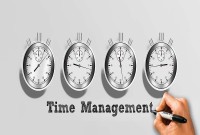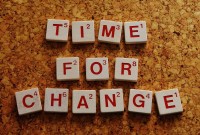- Home
- Business Processes
- Industry Knowledge
- Aerospace Industry
- Automotive Industry
- Banking Domain
- BFSI Industry
- Consumer/ FMCG Industry
- Chemicals Industry
- Engineering & Construction
- Energy Industry
- Education Domain
- Finance Domain
- Hospitality Domain
- Healthcare Industry
- Insurance Domain
- Retail Industry
- Travel and Tourism Domain
- Telecom Industry
- Leadership Skills
- eLearning
- Home
- Leadership Skills
- Leadership Theories
- Symbolic Interaction and Social Change
Symbolic Interaction and Social Change
George Herbert Mead, an American philosopher, affiliated with the University of Chicago founded the theory of symbolic interactionism. A major aspect of this is that people interact by symbols both verbal and non-verbal signals and every interaction makes a contribution to the mental make-up of the mind thus every interaction with someone, changes you and you go away a different person signifying that humans and change go together.
George Henry Mead, of Chicago University, lectured much and wrote very little. His ideas were so powerful that his students felt the need to take detailed notes and produced his material so that we, after his death, can reflect upon it. He gave rise to a sociological and psychological theory, academically known as 'symbolic interactionism'. Symbolic interactionism also referred to as the Chicago sociological tradition.
Dynamic Human Experience
According to Mead, the mind is not just reducible to the neurophysiology of the organic individual but is emergent in "the dynamic, ongoing social process that constitutes human experience. In every waking moment, we humans are taking new impressions of the world around us and rearranging the old impressions in the light of the new. Mead states that "the self is a social process," meaning that there are series of actions that go on in the mind to help formulate one's complete self, and hence there is no such thing as stability. Several significant schools of philosophic thought have stressed this.
The Constant Change Process
We are all the time taking into our minds new impressions through the senses. We see things, we hear things, we touch things, we taste things, and beyond that, we have feelings about the messages our five senses bring to us.
These impressions make us sad, happy, impatient, excited, worried, angry, uplifted, determined, uncertain, jealous, envious; they make us love, hate, sympathize, empathize, co-operate, oppose, fight; and these emotions, being stirred, provide us with energy and impel us to action. All these impressions and the emotions they stir are recorded in our memories.
All these related emotions are written down in our human audio-video brain machines and this data keeps on evolving all the time. As more ingredients come into the mind, so the earlier ones seem just a little different- they are expanded and perceived in a new light. Human memory is also selective and the entire recordings that we have done over time do not make its presence felt consciously all the time. Most of it is buried in the depths of the unconscious and sometimes get triggered by new events. We have an exciting picture of the human mind as a flow of impressions, and emotions, and ideas that connect them. The thinking we do about impressions is part of the change process.
Human Life as Interaction
As we are constantly developing new connections hence we are constantly changing them as well. Hence change is the microsecond by microsecond essence of living. It is important to understand that this way, change actually fits with the very structure of our minds and of our thinking. Hence the principles of change management discussed in this section and the need for a change mindset should not be difficult to absorb.
A major aspect of it is that people interact by symbols - words and non-verbal signals in particular. Every interaction makes a contribution to the mental make-up of the mind. When you have had an interaction with someone, you go away with a different person. You have each added something to the other.
Mead made a distinction between the 'I' and the 'Me'. The 'Me' is the accumulated understanding of "the generalized other" i.e. how one thinks one's group perceives oneself etc. The 'I' is the individual's impulses. The 'I' is self as a subject; the 'Me' is self as an object. Mead described each individual as having of being a central 'I' around which a whole lot of 'me s'-- less stable and derived from the interactions with others were revolving. The 'I' then constantly reacted to all these constantly changing 'me s' and absorbed them into itself.
Take the example of the social act of economic exchange. In any exchange, both buyer and seller must take each other's perspectives towards the object being exchanged. The seller must recognize the value for the buyer, while the buyer must recognize the desirability of money for the seller. People who have influenced us have changed us. Once you have read this article, as a result of this interaction, are will be a slightly different person from the one you were a few moments ago.
So being human and change go together and this should make the quest of this unit easier.
A Positive Approach to Change
The task of the business or any commercial enterprise is to make better things, using less of the effort and resources. Management is designed to maintain the highest rate of change that the organization and the people within it can stand. Yet even when we acknowledge all this, we are prone to resist change. We fear it; we avoid it and we sign for the status quo.
These perceptions of what is to be human can help us to take a positive approach to change and make it work to our advantage and to that of our enterprise. You are only really alive when you are changing. Change is the essence of personal growth, it is the basis of relationships with other people, and without it, there is no learning and no progress.
Related Links
You May Also Like
-
Time management is the process of planning and exercising conscious control of time spent on specific activities, especially to increase effectiveness, efficiency, and productivity. The best time management techniques improve the ways you work. Time management refers to managing time effectively so that the right time is allocated to the right activity. Learn more about the five steps for effective time management viz. study, identify, analyze, decide, and implement.
-
David Kolb produced this popular model for learning in 1984. The model suggests four stages of learning which most learners go through in order to learn effectively. Leaming is itself a process of change. Something is added to our perception and prepared us for the next impression, which will change our understanding yet more, however minutely. The Kolb contribution is a significant one because it practically equates change and learning.
-
Listening is the foundation for good communication. It is also the hardest skill to master. Do you listen to confirm what you already know, or do you listen to explore and learn new things? How can we create receptive communication as a listener? The real art of listening involves awareness and sensitivity to the feelings of the speaker because it is at the feeling level that genuine connection, relationship, and healing occurs.
-
This style is characterized by leaders making decisions for others and expecting followers to follow instructions. The directive leader is adept at giving instructions, setting expectations, and establishing timelines and performance standards. However, it is possible for the same leaders to display both directive and supportive behavior as per the demands of the situation.
-
Recognizing Stress & its Sources
As an individual, you almost certainly know what stress feels like. Stressors are events or situations to which people must adjust. Stressors may be physical or psychological in nature. The level of severity of stress is determined not merely by exposure but the intensity, duration, and frequency of stressors. The sources of stress are many. They arise from multiple areas both with the individual and from the environment.
-
Creating Highly Effective Teams
How do we create effective teams? What comes to mind when you think about an effective team? High performing teams exhibit accountability, purpose, cohesiveness, and collaboration. It is a team that works seamlessly as a whole. Everyone brings unique talents and strengths and support each other to bring out the best in everyone. How do you create one?
-
In our present Hitech scenario, society is changing very fast. What are the skills that are most relevant for leaders in relation to the changing economic environment? Leaders need to develop skills to drive innovation and change in order to play a more central role in their organizations’ activities. How do managers accept the change and meet business expectations by becoming a key figure in driving change and innovation?
-
Change is a complex phenomenon. There are different types of changes that are going on around us. Listed in this article are twelve areas in which change arises and bring some classification to it. However one may classify the change, the various heading is always interrelated. The change could be triggered by market changes, technological changes, or organizational changes.
-
Technological advancement has brought about radical changes in the methods of work and also in the organizational structure and talent strategies. The future of work is transforming our work, workforce, and workplace. Some important trends observed during recent times are discussed below.
-
All the teams are dynamic in nature and they take time to come together, they form, develop, and grow in stages, over a period of time. Teams go through five progressive stages: Forming, Storming, Norming, Performing and Adjourning. In this article, we want to introduce you to these stages of team development and certain strategies that you can use to help the team grow and develop in each of these stages.
Explore Our Free Training Articles or
Sign Up to Start With Our eLearning Courses

About Us
Learning
© 2023 TechnoFunc, All Rights Reserved










